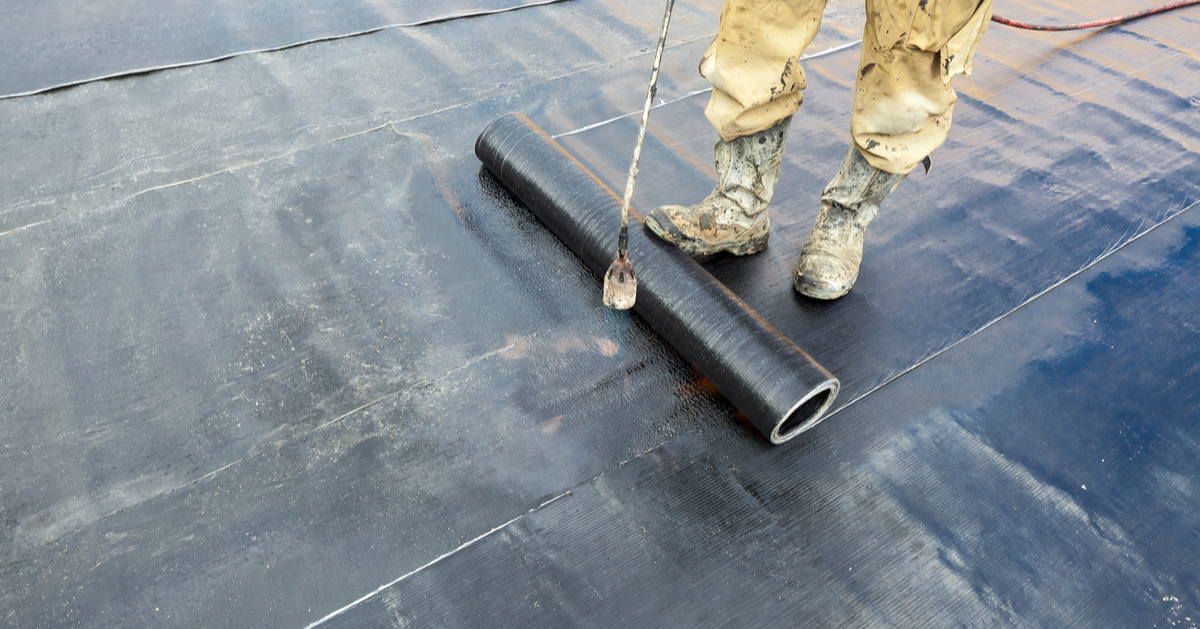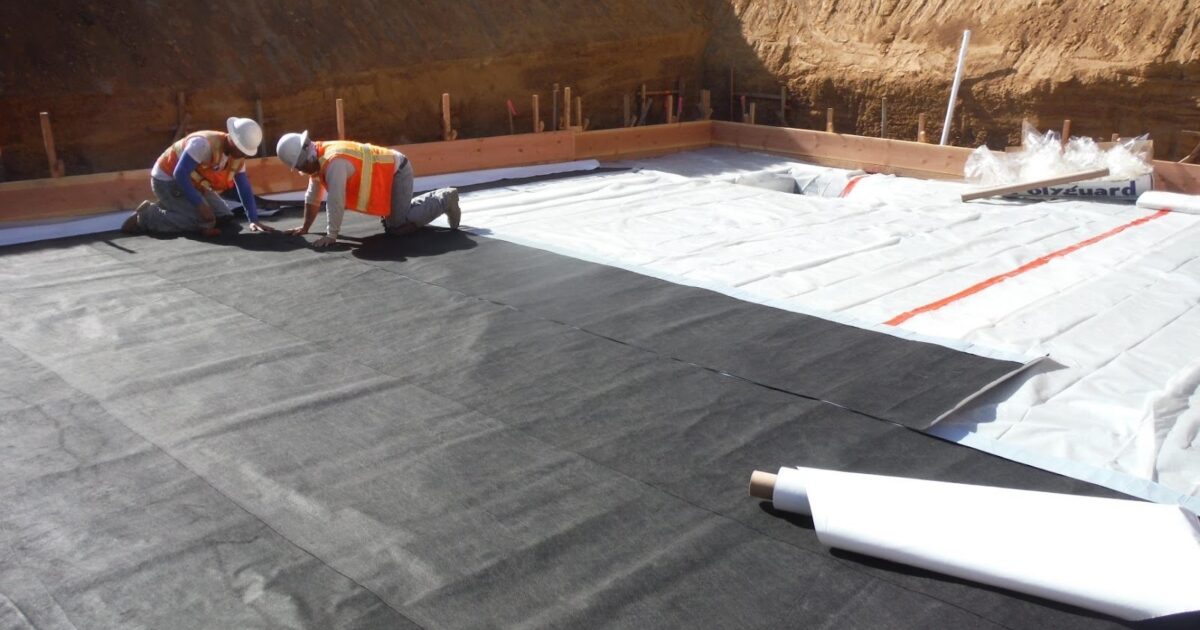Sorts of Waterproofing: Exploring the Different Approaches and Their Applications
Waterproofing is a vital element of building and maintenance. It shields structures from the detrimental results of water damages. There are several approaches offered, each with its distinct applications and advantages. From membrane layer systems to cementitious services, recognizing these choices is important for efficient execution. The option of waterproofing method can substantially affect resilience and long life. Exploring these numerous techniques discloses their distinct benefits and potential difficulties, prompting additional factor to consider of optimal solutions.
Membrane Waterproofing Equipments
Membrane waterproofing systems function as an essential obstacle against water invasion in numerous structures. These systems commonly contain thin sheets made from products like rubber, thermoplastic, or bitumen, which are put on surfaces to stop wetness infiltration. They can be mounted above or below quality and are particularly efficient in locations vulnerable to high water exposure, such as cellars, roofing systems, and foundations.The installation procedure entails cleaning up the substratum, using adhesives or guides, and exactly fitting the membrane layer to ensure total protection. Membrane systems can be either totally adhered, mechanically attached, or laid loose, depending on the particular requirements of the project. They offer resilience and adaptability, fitting architectural movements without jeopardizing their waterproofing capacities. These systems can be strengthened with additional layers for enhanced protection. Ultimately, membrane layer waterproofing systems are important for protecting structures against water damage and maintaining long-term integrity.
Liquid-Applied Waterproofing Coatings
Liquid-applied waterproofing coatings provide a versatile solution for protecting surfaces from water seepage - Water Solutions Omaha. These coverings include fluid products that, when applied, form a smooth, versatile membrane. Their adaptability permits application on different substrates, consisting of concrete, steel, and wood. The coverings can be used in varied atmospheres, from domestic to industrial setups, making them ideal for roofings, foundations, and below-grade structures.One considerable advantage of liquid-applied coatings is their capacity to adjust to uneven forms and penetrate cracks, developing a durable obstacle versus dampness. They frequently exhibit exceptional adhesion buildings and resistance to UV radiation, guaranteeing durability and toughness. In addition, the application procedure is commonly uncomplicated, permitting fast setup and minimized labor expenses. This approach also reduces the danger of water merging, as the continuous layer properly directs water away from prone areas. Generally, liquid-applied waterproofing finishes are an efficient selection for complete water defense
Cementitious Waterproofing Solutions

Cementitious waterproofing services supply a robust option for frameworks needing trusted dampness defense. These systems primarily make use of a mix of cement, sand, and chemical additives to Visit Website produce a waterproof obstacle. waterproof cement showers They are typically applied to surface areas such as concrete walls, structures, and floors, giving a sturdy, lasting protection against water intrusion.One of the crucial advantages of cementitious waterproofing is its ease of application; it can be used making use of a brush, roller, or spray, making it ideal for various project sizes. In addition, this approach is suitable with numerous surfaces and can frequently be made use of combined with various other waterproofing techniques.Cementitious services are specifically effective in settings where water exposure is a problem, such as basements or below-grade frameworks. Their excellent bond residential properties guarantee that they bond well with substratums, providing a strong and nonporous layer against moisture infiltration.
Bentonite Waterproofing
Bentonite waterproofing is a very effective technique that makes use of sodium bentonite clay to produce a natural barrier versus water. This technique manipulates the distinct residential or commercial properties of bentonite, which increases upon contact with water, sealing any kind of potential leakages and avoiding dampness infiltration. It is generally utilized in numerous applications, including foundation wall surfaces, tunnels, and preserving walls, where water resistance is essential.Bentonite can be used in numerous types, such as panels or blankets, offering adaptability in installment. Its capacity to self-seal makes it an appealing choice for locations based on changing dirt or fluctuating water levels. Furthermore, bentonite waterproofing is ecologically pleasant, as it is an all-natural material that does not introduce bathroom water proofing unsafe chemicals right into the environments.
Drain and External Waterproofing Systems
Reliable waterproofing frequently involves a combination of techniques, including drainage and exterior systems. Water drainage systems, such as French drains pipes and sump pumps, are created to reroute water away from structures, decreasing hydrostatic pressure against structures. These systems are crucial in preventing water buildup that can bring about architectural damage and mold growth.External waterproofing, on the other hand, involves applying safety obstacles to the structure's outside. Strategies such as the installment of water-proof membrane layers, layers, or sealers can help avoid water seepage. This method not just shields the structure yet likewise boosts the general longevity of the structure.Together, water drainage and exterior waterproofing systems create a thorough solution to manage water effectively. By implementing these approaches, homeowner can protect their investments against the damaging effects of wetness, ensuring lasting stability and safety and security for their buildings.
Often Asked Questions
Exactly how Do I Pick the Right Waterproofing Method for My Project?
Selecting the appropriate waterproofing approach depends on elements such as job kind, ecological problems, budget, and preferred long life. Evaluating these elements permits informed decisions tailored to details needs and requirements.

Can Waterproofing Be Applied in Cold Weather Conditions?
Waterproofing can be used in chilly weather condition problems, however it requires certain products and techniques. Cold temperatures might affect healing times and adhesion, requiring careful choice of items designed for low-temperature application.
What Are the Typical Signs of Waterproofing Failure?
Typical signs of waterproofing failure consist of noticeable water stains, peeling off paint, wet odors, mold and mildew development, and cracks in walls or structures. Foundation waterproofing Omaha. These signs recommend that moisture is permeating the obstacle, compromising its efficiency
For How Long Does Waterproofing Last Before Requiring Upkeep?
The longevity of waterproofing differs, normally lasting between 5 to ten years. Variables such as material top quality, ecological conditions, and upkeep practices affect its sturdiness, demanding regular inspections to ensure reliable security against water invasion.
Are There Eco-Friendly Waterproofing Options Available?
The question of environmentally friendly waterproofing choices discloses a growing passion in sustainable materials (Drainage & waterproofing company Omaha). Numerous all-natural compounds, such as plant-based sealants and recycled products, offer reliable remedies while decreasing ecological effect, appealing to environmentally aware customers